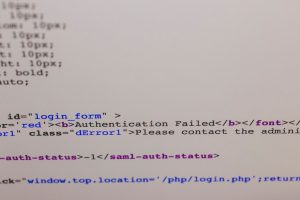
Planning to launch a crypto business that serves customers in or from Canada? This guide explains, in plain language, what an MSB license means in the Canadian context, which activities fall in scope, the usual documents and controls regulators expect, and how to structure your roadmap so you can launch without painful rework later. If you want a single place to start, see MSB license in Canada for a step-by-step service overview.
What “MSB” means in Canada (and where securities rules fit)
“MSB” (Money Services Business) is Canada’s federal AML/ATF regime for businesses that deal in fiat or virtual currency services such as exchange, transfer, or remittance. For crypto teams, two layers typically apply:
- Federal anti-money laundering (AML) regime (FINTRAC): registration and ongoing obligations for businesses dealing in virtual currency or handling crypto transfers, with clear expectations for KYC, monitoring, recordkeeping, reporting, and the Travel Rule.
- Provincial/territorial securities rules: if you operate a crypto trading platform (broker/exchange, order-matching, custody, margin, marketplace-like features), you may face securities-style requirements and platform registration/authorization with the CSA and local commissions.
Not every crypto idea needs the same permissions. A simple non-custodial tool with no customer funds flow is different from a retail exchange with hosted wallets. The first step is to map your business model to the rules that actually apply—before you start building banking and payments rails.
Activities that typically fall in MSB or securities scope
![]()
Regulators focus on whether you handle customer assets and whether your service looks like trading or custody. Common in-scope activities include:
- Exchange and brokerage: buying/selling crypto for customers, order-routing, or market access.
- Custody/hosted wallets: safeguarding private keys or controlling customers’ crypto on their behalf.
- Transfers and payment services: moving crypto between customers or to external wallets; facilitating payments or remittances in crypto.
- On/off-ramp services: fiat–crypto conversions with settlement to customer accounts.
Some models are lower risk but still scrutinized: white-label wallets, OTC desks, staking-as-a-service, token issuance, liquidity provision, and cross-border flows. If any part of your pipeline puts you “in the flow of funds” (custody, control, or settlement), expect compliance duties.
What regulators expect to see (the short list)
While each case is different, successful FINTRAC registrations and securities filings tend to show the same foundations:
- Clear corporate structure: directors, officers, and significant owners identified; clean fit-and-proper checks; transparent control and decision-making.
- Documented compliance program: written policies and procedures covering KYC, sanctions screening, transaction monitoring, suspicious transaction reporting, recordkeeping, and Travel Rule handling.
- Named Compliance Officer: real responsibility, direct access to top management, and evidence of ongoing training.
- Risk assessment: customer types, products, delivery channels, geographies; how you mitigate each risk area in practice.
- Technology & security: wallet architecture, key management, hot/cold segregation, incident response, and vendor controls.
- Custody & safeguarding: who controls private keys, multi-sig/HSM setup, reconciliation, and withdrawal processes with dual controls.
- Financial soundness: realistic budget, capital/insurance posture for your model, and continuity planning.
- Disclosures & complaints: customer agreements, risk summaries, fee schedules, complaints process, and fair marketing standards.
KYC, Travel Rule, and ongoing monitoring
Canada puts heavy weight on identity, sanctions, source-of-funds, and cross-border data. A workable baseline looks like this:
- KYC/KYB: collect and verify ID for retail users; collect corporate docs and UBOs for businesses; refresh on a risk-based schedule.
- Sanctions screening: screen users and counterparties on onboarding and continuously thereafter.
- Travel Rule: attach originator/beneficiary information to qualifying crypto transfers where required; integrate with a Travel Rule provider or internal tooling.
- Transaction monitoring: rules and machine-assisted detection for unusual behavior; case management and SAR/STR escalation.
- Recordkeeping: keep auditable logs—onboarding evidence, risk ratings, decisions, transfers, and alerts—with retention aligned to law.
Design these controls into your product from day one. Retrofitting compliance is far costlier and slows down your go-to-market.
Choosing your business model (and what it changes)
Pick the simplest model that meets your goals. Each increment in functionality can raise your regulatory burden:
- Non-custodial tools (no control of keys): lower risk, but watch for embedded brokerage or order-routing that may still trigger market rules.
- Custodial wallets: expect stricter security, safeguarding, and audit standards; withdrawals usually need dual controls and strong AML gates.
- Retail exchange/CTP: trading, order-matching, or marketplace elements can introduce securities-style registration and ongoing supervision.
- Payments/remittances: special attention to Travel Rule, sanctions, and source-of-funds—for both sender and recipient paths.
If you plan to scale across provinces or internationally, document where decisions are made, how data flows between entities, and which entity serves which customers. This clarity prevents “jurisdiction ping-pong” later.
Typical documents for a Canada MSB registration
Expect to prepare a package along these lines (exact lists vary by model):
- Corporate docs: articles, registers, org chart, shareholder agreements.
- Ownership & management: director/officer resumes, police/credit checks where applicable, beneficial ownership attestations.
- Business plan: product map, customer segments, jurisdictions served, unit economics, and growth plan.
- Compliance program: AML/ATF manual, sanctions policy, KYC standards, Travel Rule method, monitoring procedures, escalation matrix, training plan.
- Technology security pack: architecture, wallet/key design, third-party vendor matrix, penetration testing policy, incident response playbooks.
- Custody/safeguarding: cold/hot thresholds, withdrawal approvals, reconciliation process, insurance or risk transfer if applicable.
- Financials: 12–24-month budget, cash runway, capital policy, contingency plans.
- Customer docs: T&Cs, risk disclosures, fee schedule, fair marketing guidelines, complaints handling.
Timeline and sequencing
Exact timelines depend on your completeness and the complexity of your model. A practical sequence that avoids dead-ends:
- Model & gap analysis (1–2 weeks): map your features to regulatory scope; decide custodial vs non-custodial; confirm provinces and customer geos.
- Policy drafting (2–4 weeks): build AML/ATF manual, KYC standards, Travel Rule, monitoring, and security policies tied to your model.
- Pre-filing checks (1–2 weeks): align corporate structure, appoint Compliance Officer, validate vendor choices (KYC, Travel Rule, custody tech).
- FINTRAC registration (submission window): submit a complete pack; respond fast to clarifications. If your model triggers securities oversight, prepare the parallel filings with the CSA/local commissions.
- Go-live readiness (parallel): integrate KYC and monitoring vendors, set withdrawal approvals, test incident processes, run tabletop exercises.
Plan for regulator questions. Short, factual answers with evidence (policy excerpt, screen, log) keep the process moving.
Banking, EMIs, and PSPs
Banks and payment providers evaluate two things: can you keep illicit funds out and can you operate safely. Strengthen your file with:
- Documented AML controls and clear escalation paths.
- Detailed wallet/custody design and segregation between company and client assets.
- Sanctions and Travel Rule coverage for both incoming and outgoing flows.
- Counterparty risk framework (exchanges, market makers, custodians).
- Board-approved risk appetite and incident response plan.
Many teams start with a fintech-friendly EMI/PSP for day-to-day operations and add a traditional bank for redundancy. Whichever you choose, make sure they support your currencies, corridors, and risk profile.
Common pitfalls (and how to avoid them)
- Over-engineering v1: launching with trading, leverage, and custody on day one multiplies approvals and risk. Start focused.
- Unclear role of each entity: cross-border structures without clear service maps trigger long back-and-forth.
- Policy–product mismatch: policies say one thing, product does another. Align flows and screenshots with your manuals.
- Weak Travel Rule plan: regulators expect a working method, not future intent. Pick a solution and document how it works.
- Vendor due diligence gaps: if you rely on custodians, KYC, or monitoring tools, show you have vetted and tested them.
Cost considerations (without the fluff)
Budget for three buckets rather than chasing a single “license fee” number:
- One-off setup: policy drafting, registration/application preparation, advisory, and legal reviews.
- Technology/security: KYC providers, Travel Rule solutions, custody tooling, monitoring stack, and security testing.
- Ongoing compliance: officer time, audits, training, transaction monitoring, reporting, and renewals.
A realistic budget saves you from half-built solutions and last-minute vendor swaps.
How to move forward
Write down your model in one page: who you serve, who holds the keys, which provinces you target, your main corridors, and how you make money. From there, build a compliance and technology plan that exactly fits that model. If you want experienced guidance and a clean, low-friction path, start with the MSB license in Canada overview and map the steps to your go-live date.
Who can help
LegalBison is an international advisory firm that helps crypto and fintech teams obtain the permissions they need, design workable compliance programs, and get banking in place. The team blends legal precision with practical build-out—so founders can launch safely and scale with confidence. Learn more at legalbison.com.
FAQ
Do all crypto businesses in Canada need the same approvals?
No. Requirements depend on whether you handle customer assets and whether your service looks like trading, custody, or payments. Map your model first.
Is MSB registration always enough?
Not necessarily. Many models need FINTRAC MSB registration for AML/ATF, and separately may require securities-style authorization if they operate as a crypto trading platform.
What’s the Travel Rule and do we need it?
If your flows include qualifying crypto transfers, you need a method to transmit originator/beneficiary information. Most teams integrate a specialized provider.
How long does approval/registration take?
Timelines depend on completeness and complexity. Clean applications with production-ready controls proceed faster; leave buffer for questions.
What do banks look for?
Evidence that you can keep illicit funds out (KYC, monitoring, sanctions, Travel Rule), safeguard client assets, and operate reliably.








